C Gangadharan Menon visits Guindy National Park, Madras Croc Bank and Pulicat Lake Bird Sanctuary to discover wildlife and nature that’s far removed from everyday chaos
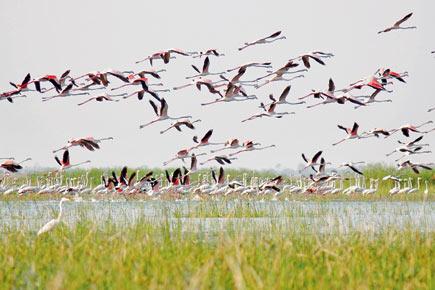
For the very first time, I see just how green Chennai and its surrounding areas can be. Then, I watch a blue-green algae pond teeming with crocodiles. And later, I see a blue, placid lake with green reeds popping out of them like periscopes. Three shades of green, with a hundred hues in between. All in a space of two days.
There’s no better way to experience the versatality of the ecosystem in these areas than taking a trip which covers Guindy National Park, Madras Croc Bank and Pulicat Lake Bird Sanctuary.
Feathered friends
Pulicat Lake Bird Sanctuary
ADVERTISEMENT
Pulicat is the second largest brackish lagoon in India after Chilika in Odisha. It has four islands that separate it from the Bay of Bengal. The biggest among them is Sriharikota, the island from which India’s first lunar mission, Chandrayaan, was launched.
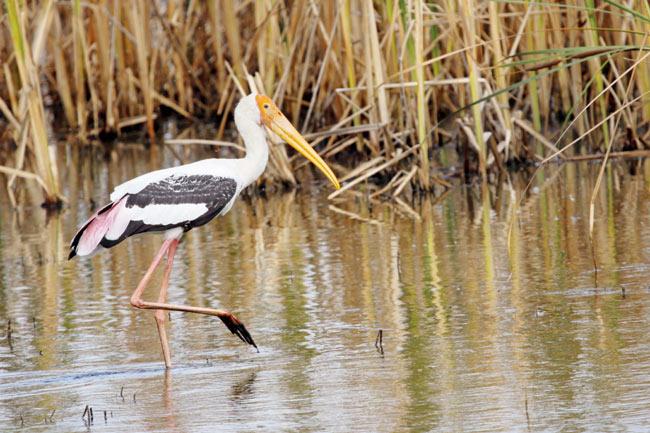
A painted stork wades through Pulicat Lake Bird Sanctuary
This lake, interestingly, has three rivers feeding it sweet water from one side, and the sea feeding it salt water from the other during high tide. This dynamic and perennial exchange breeds many species of vegetation, fish, waterbird and reptiles that are unique to this ecosystem. During the migratory season, you see thousands of birds landing in the lake, as if it’s raining feathers — flamingos from Kachchh, painted storks from Siberia and spoonbills from Eurasia. Many of them fall in love with this landscape so deeply that they keep extending their visas, and eventually never go back to their homeland. There’s a beautiful road ringing this lake and, sometimes, even bisects it. This road, along with the well-appointed benches and watch-towers that are strategically placed at regular intervals, gives you a 18o-degree ringside view of all avian action.
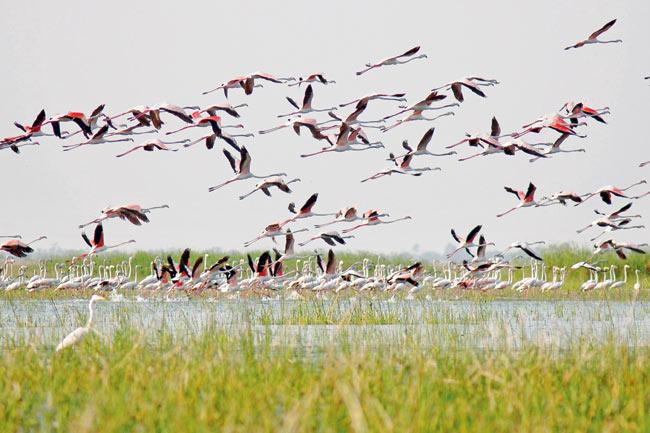
Nothing colours the skies at Pulicat Lake Bird Sanctuary like a large group of flamingoes in flight
Pulicat’s vast landscape reminds you of Kachchh, with its endless stretches of land laden with salt and seashells. Interestingly, Pulicat is the only bird sanctuary in India that straddles two states (Tamil Nadu and Andhra Pradesh).
This has created boundary issues among fishermen, who frequently fish in troubled waters. Apart from these local issues, a new ecological storm is brewing in the Bay of Bengal. Taking a cue from the historical fact this was a busy port in the first century, the powers-that-be in the 21st century are nurturing grandiose plans of converting this pristine sanctuary into a so-called, ‘world-class’ port and ship-building centre, inconsiderate to environmental laws.
The eco-sensitive zone has been heartlessly reduced from 10 km to a mere two km.
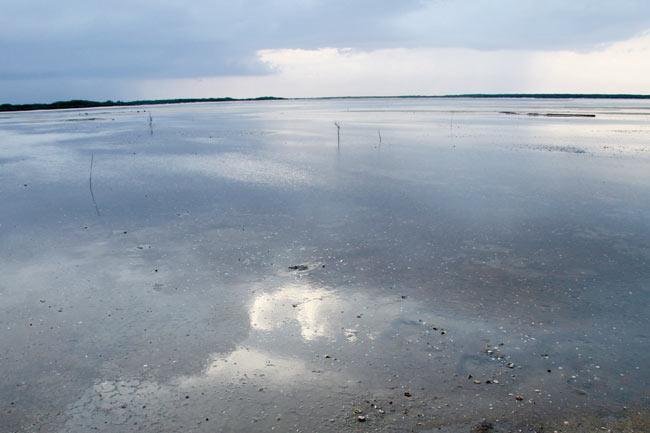
Pulicat Lake breeds species of vegetation, fish, waterbird and reptiles that are unique to this ecosystem
Sitting alone on a green bench, I glance at the horizon to see the sun calling it a day. And soon, the colours of the sky begin to mix magically with the water’s colours, creating an enchanting landscape. And here, I wonder if the greed of man will make the sun set forever on Pulicat Lake. In any case, see it while it’s still there. Offer open only till good sense lasts.
Marooned forest
Guindy National Park
This national park is situated bang in the middle of the bustling city of Chennai — a pair of green lungs surrounded by clogged arteries all around. The only other national park in India that’s located within city limits is Sanjay Gandhi National Park (SGNP) in Mumbai, but there’s a vital difference between the two parks.
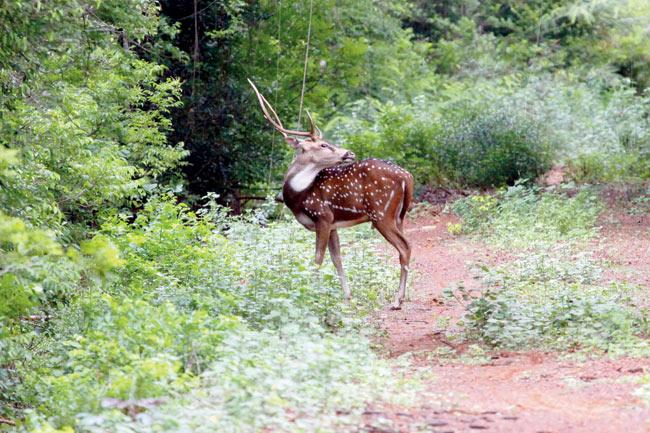
A shy spotted deer walks quietly around Guindy National Park
SGNP is a large tract of forest that’s contiguous with a vast stretch that also lies outside the park — the Tungareshwar Sanctuary and the forests of Thane district. This facilitates easy migration of wild animals, which is crucial to the health of their species.
But here in Guindy, the smallest national park in India spanning over just 270 hectares, wild animals are cut off from the rest of their fraternity. So much so that the closest herd to the herd of blackbucks found here is 600 km away, in Point Calimere. Even spotted deer, jackals, pangolins and reptiles here live in a marooned forest that floats in a concrete jungle. This leads to inbreeding among animals, which is unhealthy.
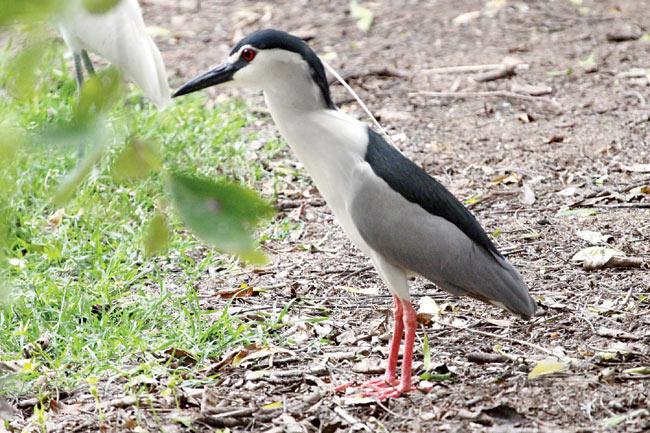
A sighting of the Night Heron at the park heartens travellers on safaris
However, in spite of these alarming facts, the six-km walk along the periphery of the park is a delectable experience. On this very path, I come across the smell of rotten palm fruit that smells exactly like toddy. The smell is so inviting that toddy cats would find it hard to resist it under the anonymous cover of night.
I am treated to stunning sights which will forever be recorded in my hard disk, if not my mind — Rhesus monkeys rappelling down an ancient rope into a deserted well and coming up as drenched beauties, a bouquet of butterflies sprouting on a wild plant, a stag that has crashed through a wall of creepers, and, as a result has loose creepers dangling from its antlers, making it look like a real greenhorn!
Mission conservation
Madras Croc Bank
In this park, apart from spotting the three species of crocodiles that are indigenous to India, I am keen to spot a member of another endangered species: a committed conservationist named Romulus Whitaker, the man who established this park. But I narrowly miss spotting him as he sets off on a field visit to the Nicobar Islands that very morning. However, an affable and knowledgeable guide, Geetha makes up for Rom’s absence. She first introduces me to a crocodile that is the alpha male of the park, and nicknamed Jaws. He was rescued as a baby, and today, is the largest marsh crocodile to have ever been found in India. His feeding reminds me of the opening scene of Jurassic Park.

Crocodiles bask in the sun at the Madras Croc Bank
Huge crocs in a nearby pond look like lizards in comparison.
Pointing to a raised mound in the distance where the crocs lay their eggs, Geetha tells me that their sex is not decided at the time of fertilisation, but during the egg’s hatching. If the egg is hatched when the surrounding temperature is below 31 °C, a female is born; and if the temperature is 31 °C or above, it will be a male!
Geetha then takes me to the stall of the Irula tribe. Here, we meet Maniyakaran, a tribal leader. He tells me of the special relationship Rom shares with the Irulas. On all his snake-watching expeditions, it is this snake-catching tribe that accompanies him, and shares their deep knowledge of snake behaviour passed down from pre-Dravidian times.
These hunter-gatherers have never taken up farming, but have perfected the art of finding grain to subsist. Rats steal grains from farms and hoard them in their holes. Snakes kill rats and stay on. Once the snakes vacate these places, the Irulas come in and raid the deserted pits and easily pick up eight to 10 kg grain from a single rat-hole.
Who says you have to cultivate grains yourself?
 Subscribe today by clicking the link and stay updated with the latest news!" Click here!
Subscribe today by clicking the link and stay updated with the latest news!" Click here!







